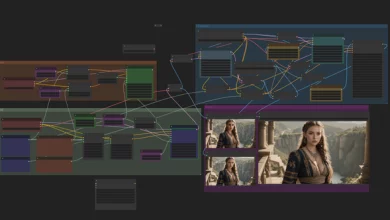
In this article, we only deal with the differences of two technologies that are very similar but different from many points of view. NFC (Near Field Communication) and RFID (Radio-Frequency Identification) technology in fact differ significantly from each other depending on the technical characteristics it possesses and therefore in practical uses. Today there are still many people who do not understand the difference between the two and if you are one of them, keep reading!
Below are the main differences and similarities between NFC and RFID
– NFC and RFID are wireless technologies that both operate with an active or passive communication mode from the point of view of energy supply to allow the exchange of data between electronic devices.
– RFID technology uses data transmission through electromagnetic coupling. While in the NFC case, the applications always work in the so-called near field where only inductive coupling occurs.
– RFID locking system features work on a wide spectrum of radio frequencies, these vary according to the applications, the tags used and according to the various national regulations. The NFC, on the other hand, allows communication only at the radio frequency of 13.56 MHz.
– RFID can operate over distances of a few tens of meters, making it unsuitable for applications that require high security. The NFC is designed for communications that reach distances of 10cm, while in practice it happens that the distances of use are shorter.
– RFID tags can be both active and passive, in the NFC field there is no such distinction. In NFC technology there are only passive tags and readers, which can be contained in a single device such as a smartphone. As for the passive tags, these are very similar in the two technologies, just think of the interoperability of the tags that adopt the ISO 14443 communication protocol.
The 3 modes of NFC
One of the most significant differences compared to RFID are the three modes in which NFC can work. RFID works in Reader/Writer mode, while NFC adds two modes of use: peer-to-peer mode and card emulation mode.
The Reader / Writer communication mode is what allows an NFC-enabled device to read and write a passive Tag.
Card emulation mode is the mode that allows a device to emulate an NFC Tag. The standards that can be emulated by the smartphone are ISO 14443-A, ISO 14443-B and finally the Felica standard, made by Sony. The peculiarity of this type of operation is that the smartphone behaves like a passive component.
The third method of use is peer-to-peer: this is a type of two-way communication that takes place between two NFC-enabled devices or smartphones. So in an alternating manner each device will behave as a Reader and then as a Tag.
Understanding the difference between RFID and NFC technology is a key factor in planning your security infrastructure. It will help you determine which devices to use for your greater access control and visitor tracking needs, so it’s important to do the deep research as you approach this foundational and sometimes easily overlooked part of the technology.




